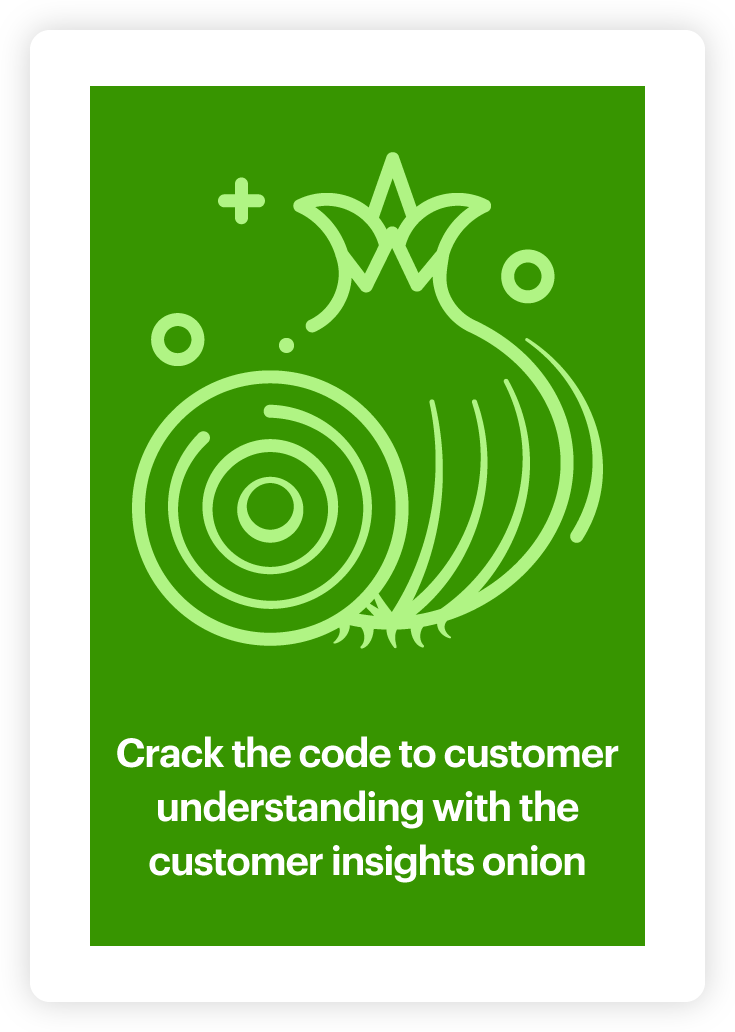How to improve your customer journey through NPS, CSAT and CES analysis

Customers are the heartbeat of your business’s success. This is why using customer insights to improve customer experience is vital for every company. In this article, we’ll show you how you can use unstructured, qualitative responses from your NPS, CSAT, and CES surveys to understand pain points, improve the customer journey and boost customer satisfaction.
But first, let’s talk about what each of these terms actually means:
Customer journey
The customer journey is a series of stages throughout the sales process – from awareness all the way to advocacy – with each stage requiring a distinct strategic approach and tailored communications.
Starting at a customer’s initial contact with your brand, every interaction and communication impacts their overall experience. Customer journey analysis uncovers common pain points and selling points, giving you the insight to optimize sales processes and boost customer satisfaction.
Some say there are three stages of the customer journey, others say eight, but five is the most widely accepted number. So what are the 5 stages of customer journey?
1. Awareness: First impressions
At this stage, potential customers know they have a problem to solve or a goal to achieve and are looking to understand available solutions. They might hear about your brand through word of mouth, social media, online research, or advertising.
2. Consideration: Evaluating options
After some initial research, customers have a better understanding of their options and expectations. At this stage, they’ve narrowed down the list to a few competitors and are seeking out more detailed information and pricing to make a decision. They are actively considering your brand.
3. Decision: A lead becomes a customer
Congratulations! You made the sale. The buyer has found your brand, learned about your offerings, and made the decision to buy. This might feel like the end of the journey, but trust me, we’re far from done.
4. Retention: Driving repeat engagement
Now that you’ve won over a new customer, it’s time to follow through on the promises made during the sales process. In the B2B world, it is crucial that you encourage and aid your customer in using your product or service so that they find value. If all goes well, this customer will repurchase, resulting in increased customer lifetime value. In the B2C realm, this encompasses all the steps you take to keep your brand top of mind and drive repeat purchasing behavior.
5. Advocacy: Spread the word
Not only do happy customers result in renewals or repurchasing, but they tell their friends and family too. Now you have the opportunity to capitalize on satisfaction through recommendations, testimonials and customer referrals. Unfortunately, the inverse is also true. If customers are not satisfied, their negative opinion can discourage others from buying (especially if they leave a negative review online).
Net Promoter Score (NPS)
NPS analysis is used to understand how likely a customer is to recommend your brand.
NPS surveys work with a scale from 0 to 10 and measure promoters (ratings of 9 or 10), detractors (ratings of 6 or lower) and passives (ratings of 7 or 8) to determine overall brand performance. Your NPS is then calculated by subtracting the percentage of promoters from the percentage of detractors. Questions are typically set up in the following format:
On a scale from 0 to 10, how likely are you to recommend [brand, product, service…] to a [friend, colleague, family member…]?
Customer Satisfaction Score (CSAT)
As you might have guessed, customer satisfaction surveys serve to assess customer satisfaction. CSAT analysis measures how a consumer feels about a particular experience they have had with your brand and how well you have met their expectations.
CSAT survey questions follow a 1 to 5 scale format (1 being very dissatisfied and 5 being very satisfied). The percentage of respondents who are satisfied (4) and very satisfied (5) form your CSAT score.
On a scale from 1 to 5, how satisfied were you with your product purchase/customer service experience?
Customer Effort Score (CES)
Customer Effort Score is a metric used to gauge the amount of effort required from the customer when dealing with an issue, asking a question, or having any interaction with your brand or product.
CES surveys are most commonly used in the tech realm by software businesses. They are a great way to measure difficulties or pain points along the customer journey. CES questions follow this format:
On a scale of 1 to 5, how easy did [company/brand] make it for you to [accomplish a specific task/objective]?
Ratings + open-ends: A powerful combination
Discovering the reasons behind customers’ CSAT, NPS, and CES ratings is essential to generating customer insights that can improve the customer journey. In addition to collecting the raw scores, each type of survey also typically includes an open-end question asking people to provide more detail. This is particularly useful because the open-end can tell you the reason behind a specific selection/rating.
Here’s an example of this sort of question pairing:
1. On a scale from 0 to 10, how likely are you to recommend [brand, product, service…] to a [friend, colleague, family member…]?
2. In a few sentences explain the reasons for your rating.
Surveys that ask these types of questions to dig into the reasons underpinning NPS, CES, and CSAT scores can be sent out via email at any point in the customer journey, on company websites after purchases, or through chatbots after the resolution of a customer request. To track how these metrics and hence customer satisfaction improve or change over time, you should consider sending out customer feedback surveys regularly.
How to analyze NPS, CES and CSAT to improve your customer journey
Having generated heaps of insightful responses from your customers, you might be wondering how to best go about your CES, CSAT and NPS analysis.
The quant analysis of the actual rating score is easy and in most cases done automatically by the surveying tool you are using.
The hard part, however, is making sense of the qualitative open-ended responses that accompany your rating scores. Tackling the analysis of open-ended survey questions manually can be time-intensive and cumbersome. Not to mention the potential for human error and bias inherent in manual survey coding. But don’t fret – here’s where customer insights tools come into play, helping you by automating the most time-consuming aspects of the analysis process.
When it comes to using NPS, CES and CSAT analysis to generate insights to improve your customer journey, it all starts with collecting responses after specific events in the customer journey so you can map responses to journey stages accordingly. NPS, CSAT and CES survey data tends to be most useful for understanding the decision, retention and advocacy stages of the customer journey.
For example, you might want to send out a CSAT survey after a customer’s initial purchase to understand what motivates customers to make the buying decision. Sending out a survey after a repeat purchase would provide you with information about the retention stage while sending out a questionnaire to customers whose referral link has been used can give you insight into the advocacy stage.
There are three primary ways businesses go about analyzing this data to generate customer insights:
1) Monitoring changes over time
By comparing customer feedback data gathered through your NPS, CES and CSAT surveys in different time periods, you can pinpoint changes in customer feedback and sentiment over time.
If you’re looking to improve your customer journey, you might want to compare feedback from a particular stage over time to understand the impact of your efforts to improve that stage. For example, you could analyze CSAT survey responses collected after a person first becomes a customer. Seeing how survey responses change from one quarter to the next can give you insight into how changes in your onboarding or checkout processes have been received.
The same holds true when trying to determine whether a product or customer service improvement has had the wanted positive effects on your customer journey. In this case, you would send out a survey before and after implementing changes, comparing the two data sets generated from each survey against each other to see how rating scores and overall customer satisfaction have changed.
2) Different customer segments
Customer loyalty has become increasingly fickle, which is why it is crucial to pinpoint what causes customer churn, turns buyers into brand advocates, or how your brand and products resonate with different demographic audience segments.
You might want to understand what pushes a customer from consideration to purchasing decision. This will tell you how consumer opinion evolves from buying to becoming advocates or detractors – ie. what results in customer satisfaction. During the decision stage, are prospective customers routinely deciding not to purchase because a competitor is cheaper? Consider lowering prices or adjusting your communications to better communicate value.
While these surveys only ask two questions, you can enrich responses with existing data points in your CRM system to segment survey data based on customer location or demographics. Demographic segmentation helps you understand how different customer segments feel in the same stage of the customer journey.
To illustrate: You might want to compare what drives a millennial to recommend your brand to a friend or family member vs. someone belonging to gen z or gen x.
3) Positive vs. negative responses
Comparing the qualitative unstructured responses accompanying positive NPS, CES and CSAT ratings against negative ones will help you discover the drivers of good and bad ratings. Once you’ve pinpointed the WHYs behind the WHATs you can build upon and promote what customers already like about your product, service or company and implement changes and improvements where necessary.
Once a prospect has become a customer and is purchasing your product or service, the only thing holding them back from moving on toward the retention and/or advocacy stage might be a bad experience with customer service or difficulties when trying to get a product question answered.
CES surveys, for one, can help you find out how easy (or hard) it is for customers to request help from your customer care center or to schedule repair appointments with technicians. You might discover that customers are encountering problems when trying to set up appointments or that they’d rather use a self-service booking system than having to call a service hotline. Discovering these sorts of pain points and implementing changes accordingly will help you improve the customer journey and hence increase customer loyalty and the likelihood of customers turning into advocates.
Using consumer insights to improve the customer journey
Regardless of what product or service your company has to offer, understanding your customers’ experiences with your brand is essential to streamlining sales processes, increasing customer lifetime value and decreasing customer churn.
Every customer insight found in regard to your customer journey implies a clear action to improve customer acquisition and retention strategies. The insights you generate from the qualitative and quantitative feedback gathered through your NPS, CES and CSAT surveys, are specific to your customer base and will ultimately enable you to optimize marketing and sales processes, as well as all of your other business strategies. Optimizing the customer journey to its most efficient and effective form will bring in qualified leads who will advocate for your business or brand and which you are more likely to retain.
Relative Insight will allow you to uncover actionable consumer insights that will help improve your customer journey and set you up for success. Download our introductory guide to customer insights or book a no-commitment discovery call to learn more.
